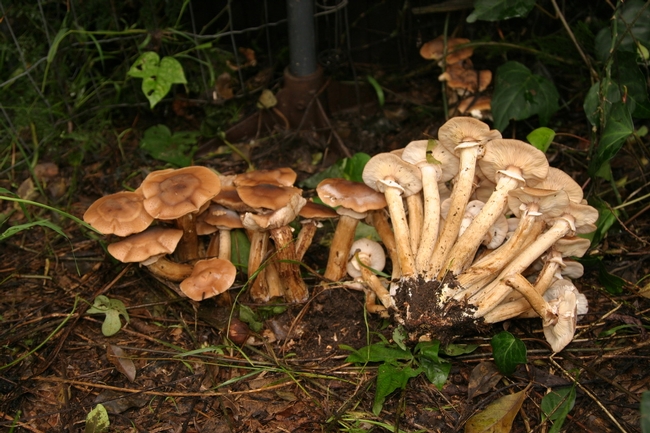What is Armillaria Root Rot?
Armillaria root rot is a severe fungal disease that affects trees, woody plants, and some herbaceous plants including palms and succulents.
Also known as oak root fungus, Armillaria root rot can rapidly kill trees and presents a challenge to management since infected woody roots can persist for years underground. No plants are completely immune to Armillaria root rot, so prevention is key. Deeply planted trees are often more susceptible to this disease.
The distinctive “honey mushrooms” growing from the base of a tree signals an infection, but they may not always be present. Other visible symptoms include flat cankers on the trunk, wilting, and canopy thinning.
In UC IPM's new publication Pest Notes: Armillaria Root Rot, UCCE Advisors Jim Downer and Igor Lacan provide research-based techniques for prevention and management of this common disease of landscape trees and plants, discuss the life cycle of the fungus and damage to the host plants, and include color photographs to aid in identification.
You can browse the full list of resources on invertebrate pests, diseases, weeds, vertebrate pests, and management methods on the UC IPM website.
